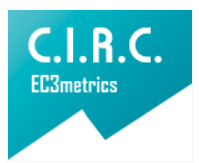The Clock Drawing Test
Test del Dibujo del Reloj New scoring criteria
Main Article Content
The quick test is an evaluation used to assess various cognitive functions, including language (verbal comprehension), attention, memory, planning, reasoning, the ability to inhibit, and visuospatial analysis in graphic space. In the present study, this test will be found as a simple detection tool based on a selection of 100 adult patients and, based on the affected findings, a valuation table with new scoring criteria is proposed, subsequently evaluating whether there are variations in the subjective interpretation of it through the participation of other inter-evaluators (E1, E2, E3). The results indicated by the new scoring criteria were easy to apply and interpret, and no statistically relevant differences were found among all the inter-evaluators.
Key word: neuropsychological evaluation, neurorehabilitation, screening, assessment, older adult, cognitive impairment.
Downloads
Publication Facts
Reviewer profiles N/A
Author statements
Indexed in
- Academic society
- Bogotá: Corporación Universitaria Iberoamericana
- Publisher
- Bogotá: Corporación Universitaria Iberoamericana
Article Details
Alvarado, C., Gomez, J. F., Etayo, E., Giraldo, C. E., Pineda, A. y Toro, E. (2014) Estudio EDECO. Estudio poblacional de deterioro cognitivo en población colombiana. Revista Acta Neurológica Colombiana, 39(3), 264-271. http://www.scielo.org.co/pdf/amc/v39n3/v39n3a10.pdf
Bermejo Pareja, F. (2003) Reflexiones sobre el cribado (screnning) de enfermedades neurológicas. Revista Neurologia, 18(2), 29-38. https://dialnet.unirioja.es/servlet/articulo?codigo=766433
Burin, D. I. y Otros (2008) Evaluación neuropsicológica en adultos. Editorial Paidós.
Cacho-Gutierrez, L. J., Garcia-Garcia, R., Arcaya-Navarro, J., Vicente-Villardon, J. L. y Lantada-Puebla, N. (1999). Una propuesta de aplicación y puntuación del test del reloj en la enfermedad de Alzheimer. Revista Neurológica, 28(7), 648-655. DOI: 10.33588/rn.2807.98501
Instituto Nacional de Estadísticas y Censos. (2012) Censo Nacional de Población, Hogares y Viviendas 2010. Censo del Bicentenario: Resultados definitivos. Recuperado de: https://www.indec.gob.ar/ftp/cuadros/poblacion/censo2010_tomo1.pdf
Díaz Cabezas, R., Marulanda Mejia, F. y Martinez Arias, M. H. (2013) Prevalencia de deterioro cognitivo y demencia en mayores de 65 años en una población urbana colombiana. Revista Acta Neurológica Colombiana, 29(3), 141-151. https://www.acnweb.org/es/acta-neurologica/volumen-29-2013/146-volumen-29-no-3/901-prevalencia-de-deterioro-cognitivo-y-demencia-en-mayores-de-65-anos-en-una-poblacion-urbana-colombiana.html
Guevara Silva, E. A., Flores Mendoza, M. y Torres Ramirez, L. (2010). Evaluación del deterioro cognitivo en pacientes con enfermedad de Parkinson mediante el Test del Dibujo del Reloj. Revista Diagnostico, 49(1). http://www.fihu.org.pe/revista/numeros/2010/ene-mar/11-17.html
Helm-Estabrooks, A. (2005). Manual de la afasia y de terapia de la afasia. Editorial Médica Panamericana
Mangone, C. A., Grillo, R., Saavedra, L., Salgado, P. y Pallo, V. (2005). Nuevas variables de evaluación del test del reloj permitiendo un precoz y fácil diagnóstico del nivel de deterioro cognitivo. VERTEX Revista Argentina de Psiquiatría, 16(59), 13-19. https://www.researchgate.net/publication/303519537_Nuevas_variables_de_evaluacion_del_test_del_reloj_permitiendo_un_precoz_y_facil_diagnostico_del_nivel_de_deterioro_cognitivo
Oscanoa, T. (2004) Evaluación de la prueba del reloj en el tamizaje de Enfermedad de Alzheimer. Revista Anales de la Facultad de Medicina, 65(1), 42-48. http://www.scielo.org.pe/scielo.php?script=sci_arttext&pid=S1025-55832004000100007&lng=es&tlng=es.
Rouleau I., Salmon, D. P., Butters, N., Kennedy, C. y McGuire, K. (1992). Quantitative and qualitative analyses of clock drawings in Alzheimer's and Huntington's disease. Brain and Cognition, 18(1), 70-87. DOI: 10.1016/0278-2626(92)90112-Y
Sacks, O. (2016). El hombre que confundió a su mujer con un sombrero. Editorial Anagrama.
Shulman, K. I., Shedletsky, R. y Silver, I. L. (1986) The challenge of time: clock-drawing and cognitive function in the elderly. Internacional Journal of Geriatric Psychiatry, 1(2), 135-140.
DOI: 10.1002/gps.930010209
Soto, C., Hidalgo, G. y Salinas, P. (2014). Aspectos fundamentales en la rehabilitación post TEC en el paciente adulto y pediátrico. Revista Médica Clínica Las Condes, 25(2), 306-313. DOI: 10.1016/S0716-8640(14)70042-2
Sousa, L. y Vivas, L. (2017). Valores normativos del Addenbrooke's Cognitive Examination (ACE) para población con bajo nivel socioeducativo. Revista Neurología Argentina, 9(4), 203-258. DOI: 10.1016/j.neuarg.2017.07.005
Torralva, T., Roca, M., Gleichgerrvht, E., Bonifacio, A., Raimondi, C. y Manes, F. (2011). Validación de la versión en español del Addenbrooke´s cognitive examination-revisado (ACE-R). Revista Neurología, 26(6), 351-356. DOI: 10.1016/j.nrl.2010.10.013
Vicens Vilanova, J. (2013). El test del dibujo del reloj, interpretación de casos. Revista Española de Medicina Legal, 39(2), 82-83. DOI: 10.1016/j.reml.2013.03.001
Villejo, A. y Puertas-Martin, V. (2011). Utilidad de los test breves en el cribado de demencia. Revista Neurología, 26(7), 425-433. DOI: 10.1016/j.nrl.2010.12.002

















